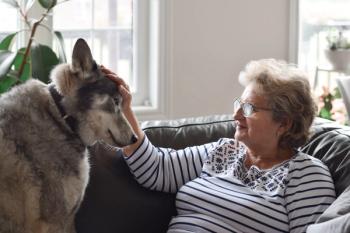
Three new clients and other important numbers
Study neighborhood demographics to get a glimpse of your veterinary practice's future.
You deal with numbers every day, but there are a handful of numbers that are absolutely critical to the success of your veterinary practice. Don't neglect them.
New clients
The first important number is three. You need three new clients every day to keep your doors open. Services to these three new clients will average three to three-and-a-half times your demographically correct examination fee, another essential number. An exam fee that's too low is just as bad for your future as one that's too high.
A quick Internet search will help you arrive at that perfect exam fee. First, find the 2012 median family income for your practice neighborhood. That number, without the thousands, multiplied by 2.2 will give you the appropriate average hospital transaction for your hospital. And dividing that average hospital transaction by three will give you the right exam fee.
Let's say a neighborhood's median family income is $50,000:
So a successful veterinary exam fee for this neighborhood is $37. With an $80,000 median family income, the exam fee becomes $59. What the hospital down the street charges is irrelevant.
The demographically correct examination fee is the keystone to all of your other fees. A higher family income means a better neighborhood—where, incidentally, everything purchasable is priced higher, but not unexpectedly so.
Try an experiment. Go to a chain supermarket in your neighborhood and price any 10 items that are not on sale. Then go to the same store in a different neighborhood and price the same 10 items. Just to confirm the facts, try a third store in a different part of the city. You'll find that where the median family income is higher, the exact same name-brand groceries will be higher in price—and nobody will be complaining.
Now, I realize that you pay exactly the same amount for a bottle of Naxcel that every other veterinarian in your city pays, but those who can charge higher fees because of their location and higher family incomes reap more profit with every transaction. Eureka! Now you've discovered the secret: Buy low and sell high—but appropriate to your neighborhood.
Expected growth
The Internet will also divulge expected population growth, our third essential number. Identify the area within a three-mile radius of your hospital or proposed location. Find the 2017 population projection and divide that by the 2012 population. This is important. If you get anything less than the the national average of 5.8 percent, beware—this means all businesses in the area will be scrambling for fewer clients. If this is the case, you might want to think "satellite."
Four hundred square feet of strip mall space, an exam table, a few exam instruments and three portable cages will provide you with a whole new population to dilute the expensive overhead of your completely equipped state-of-the-art facility—the one you need more clients for.
Satellites should be no more than 15 miles (or minutes) from the home base. If you feed the satellite facility phone into your main location, it's easy to schedule appointments. The home base team handles all surgery, radiographs, diagnostics and hospitalized treatments. The pet may be returned to the satellite location for pickup in the afternoon or, at the owner's discretion, be picked up at the main hospital.
If the levels of income and population growth are greater at your satellite clinic than your main location, don't be surprised if the two facilities swap roles in a few years. It's a common occurrence. Some of the largest and finest veterinary facilities in this country were established as satellites feeding into one well-equipped central facility.
Population
While others may argue the specifics, a population of 6,000 is needed to support one veterinarian. A population of this size provides about 3,500 pet owners and 2,000 pet owners who will use veterinary services. That's right—40 percent of pet owners do nothing medically for their pets ever.
See, it's all in the numbers. Just three clients per day will add about $330 daily or $100,000 annually at the $37 exam fee hospital (assuming a standard 307-day working year) and $525 per day or $160,000 in the $57 exam fee facility. Three clients per day on their own wouldn't be enough to sustain a standalone hospital, but they would act as a powerful overhead dilutor in a hospital with a satellite.
If your fully equipped hospital is failing for lack of client transactions, you may want to research a viable site within 15 miles and move all you have now to the new site, leaving the old hospital to function as a satellite. This way you keep all the clients who have invested in your personality and skills while minimizing your time on site.
The bottom line is to find yourself the best location to ensure success, and you do this by performing demographic research, both on your own and through professional advisors, to arrive at the appropriate fees. You would send samples to the lab on your least challenging medical case—is your practice's future any less important?
5.8% Population growth rate needed for future practice success—based on the national average
Dr. Gerald Snyder publishes Veterinary Productivity, a newsletter for practice productivity. He can be reached at 217 Clinton St., Hoboken NJ 07030; (800) 292-7995; or
Newsletter
From exam room tips to practice management insights, get trusted veterinary news delivered straight to your inbox—subscribe to dvm360.




